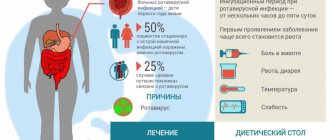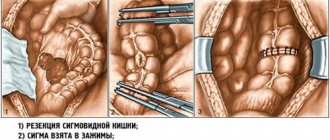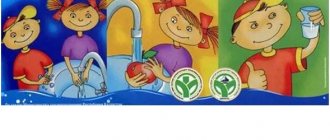Constipation in a child is a pathological condition in which intestinal activity decreases and the baby does not have bowel movements for a day or more. It can be manifested by the release of dry stool, lumpy, but with a normal frequency of bowel movements.
Children often suffer from constipation due to poor diet, exposure to stress factors, and chronic diseases of the gastrointestinal tract. To find out the cause of constipation in a child, it is necessary to conduct a high-quality diagnosis of the baby’s body using modern research methods. You can contact our clinic with the problem of a long delay in defecation in a child, and our doctor will find out the cause of the disease and also prescribe the correct treatment.
Causes of the condition
The causes of the problem are usually determined by the attending physician. He carefully collects anamnesis, evaluates symptoms and analyzes the information received. There are several common factors that cause constipation in children.
Violation of the rules of rational nutrition
Symptoms appear after 6 months, during the period when the mother introduces complementary foods. The cause of constipation is the predominance of solid foods and a large amount of cereals in the diet, as well as a reduced supply of breast milk familiar to the baby. The feces become hard, in the form of lumps - “sheep feces”, and the act of defecation becomes painful for the child, so the baby cries during bowel movements.
In children aged 3–4 years, constipation occurs due to insufficient fiber, which stimulates gastrointestinal motility. Its level in the intestines decreases because the child does not receive enough vegetables and fruits; the diet becomes more cottage cheese, meat, and porridge.
How to help? Diet correction is the main step that parents must take in this case. You need to add more “soft” foods, liquid foods, vegetables and fruits, and plain water to your diet.
Factors influencing the psychological state of the child
Children who are just beginning to be taught to use a child's potty are prone to “psychological constipation.” Parents at this time should be especially calm and patient, because if the child feels aggression and irritation, each act of defecation becomes real stress for him, which is accompanied by a reflex connection and the absence of stool.
Children 5–6 years old may have difficulty visiting the toilet in kindergarten or school, which leads to forced retention of feces, and subsequently to constipation. Prevention of psychological constipation should be carried out through conversations with the child.
Disruption of normal bacterial flora
Constipation in a child can also be associated with intestinal dysbiosis. In the baby’s digestive tract, pathogenic bacteria actively grow and multiply, and the growth of beneficial microflora is inhibited.
Bowel movements occur once every 2-3 days, and the stool is foul-smelling, has a greenish tint, and is often covered with a gray coating. Delayed bowel movements are accompanied by pain and rumbling in the abdomen.
Infectious diseases
Chronic constipation is often caused by infectious processes in which the child's temperature rises greatly. To compensate for this reaction, the body activates sweating (water is released through the skin), and the breathing rate also increases.
At a temperature of 38–39°C, fecal retention can reach 3–4 days. In this case, you should definitely consult a doctor.
Diseases of the rectum, chronic diseases of the digestive system
Constipation in a child becomes a symptom of an organic disease, such as damage to the rectal mucosa. In this case, the child deliberately restrains the act of defecation, which causes severe pain.
Ulcers and gastritis disrupt the normal digestion of food, which affects the frequency of stool.
Helminth damage
Young children, especially those aged 1–2 years, often experience constipation due to helminth damage. Poor hygiene leads to the entry of parasites into the gastrointestinal tract, disrupting the physiological digestion of food and its mechanical movement through the digestive canal.
Quite rarely, constipation in children occurs due to congenital pathology. In addition, the cause of bowel dysfunction can be the use of certain pharmaceutical drugs. In this case, consultation with your doctor is necessary.
Child nutrition to prevent constipation
A five-year-old child already has his own taste preferences, taking these into account, it is necessary to correct his diet if he already has difficulties with bowel movements. The characteristics of such a diet will definitely be explained to the parents by the attending physician, especially if the cause of constipation is any disease.
Your child should eat fruits and vegetables every day
In general, the nutritional recommendations are as follows (they are also measures to prevent constipation for each child):
- be sure to follow a strict daily and nutritional regimen, which will lead to regular bowel movements;
- exclude from the menu fatty foods, baked goods, sweets, chocolate, factory-made juices, lemonades, sparkling water;
- limit excessive consumption of meat and poultry, as well as sausages;
- Give your baby fermented milk products, boiled vegetables, fresh fruits and berries every day;
- cook porridge from “gray” cereals (oatmeal, buckwheat, corn, wheat, barley).
It is also important to ensure that the child moves more, for which it would be great to engage in some kind of sport with him. These simple measures, as well as medications according to indications, will definitely help your baby cope with such a problem as constipation.
Symptoms
Constipation in children is characterized by both general and local manifestations. At the local level, parents note the following symptoms:
- reduction in stool frequency;
- insufficient bowel movement;
- hardening of stool;
- Painful sensations during bowel movements or fecal incontinence.
General clinical manifestations:
- increased fatigue, weakness, headache and decreased appetite in the baby, which indicates intoxication;
- the appearance of acne, pimples on the skin;
- increase in abdominal volume due to a large amount of gas.
Our medical clinic has created all the conditions for a complete diagnosis of constipation and making the correct diagnosis for a child!
Clinical manifestations of functional stool retention
A characteristic clinical symptom of constipation is the absence of gas discharge.
In most cases, functional constipation develops sequentially, with stool disturbances observed for three or more months.
Sudden, prolonged retention of stool for more than three days is considered an acute manifestation of constipation.
Each such case requires careful attention so as not to miss a life-threatening pathology for the child - intestinal obstruction that occurs due to inflammation, possible accumulation of helminths or a tumor.
A characteristic clinical symptom of obstruction is the absence of gas discharge. To differentiate this pathology from organic constipation, anomalies of the large intestine should be immediately excluded during examination.
Classification and stages of development of constipation in a child
In modern clinical practice, constipation does not lend itself to a single classical classification, so there are several types of division of the disease.
Based on the origin of constipation, the disease is usually divided into:
- Primary constipation occurs due to abnormal development of the child’s gastrointestinal tract.
- Secondary constipation - appears due to various reasons throughout life (dysbacteriosis, malnutrition, trauma).
- Idiopathic constipation - the exact cause has not been established.
Depending on the period of occurrence:
- Acute - a situation where there was normal stool, but the frequency of bowel movements suddenly decreased, and there has been no normal stool for several days.
- Chronic is a condition in which the baby suffers from defecation disorders for more than 3 months.
Depending on the activity of the intestines, hypertonic and hypotonic constipation are distinguished: in the first case, the intestines are in excessive tone, and in the second, its tone is not enough to maintain normal motility.
The appearance of functional constipation (in which there are no organic changes in the gastrointestinal tract) is noted in 90% of cases.
Constipation in a child is divided depending on the degree of compensation of the disease. Thus, in the compensation stage, defecation occurs once every 2-3 days, in subcompensation - once every 3-7 days, with decompensation, the frequency of stool reaches 1 time in 7 days.
What ways are there to help your baby cope with constipation?
Massaging your tummy is a good way to relieve constipation.
The most common way is to massage the tummy clockwise. Before the procedure, you need to wash your hands and warm them (if they are cool) so that the baby is comfortable enough.
Using smooth circular movements for 5-10 minutes, you need to move your palm over the baby’s tummy. The “bicycle” exercise is also useful for children with constipation.
To do this, the adult must carefully grasp the baby’s legs (ankles or feet) with both hands and imitate riding a bicycle in a circular motion.
Pathogenesis of constipation
With constipation, feces remain in the large intestine for a long time, which leads to additional absorption of fluid from them and excessive compaction. In this case, bowel movement is accompanied by severe pain during defecation, as well as damage to the mucous membrane. The child is forced to hold back stool because defecation is painful.
The more often fecal retention occurs, the more the rectal mucosa, sigmoid colon, and large intestine as a whole adapt to this. The response of the nerve endings of these areas to feces is reduced, which leads to intensive development of the disease.
Due to the fact that the rectum expands, the tone of the anal sphincter decreases. This leads to the fact that the liquid part of the stool flows around its solid component, and the person observes stool. Over time, the normal balance of bacterial flora in the child’s body is disrupted, which impairs the digestion of food and further aggravates the pathological process.
Child examination
For constipation, a specialist prescribes a comprehensive examination.
When parents with a child suffering from chronic constipation consult a doctor, the specialist will prescribe a comprehensive examination.
First, a family gastroenterological history is collected from the parents and the child himself.
The doctor is interested in the developmental history of the little patient, possible behavioral disorders, stress factors of family upbringing, the child’s diet, and previous treatment.
Then an examination is carried out to identify clinical symptoms of constipation: determining the color and elasticity of the skin, the size of the abdomen, and the condition of the tongue. On palpation, the presence of feces in the colon and its soreness are noted.
Examination of the area near the anus allows you to see skin irritation, the presence or absence of a crack. Laboratory and instrumental studies are carried out:
Diagnostics
Constipation in a child must be treated:
- if the baby complains of abdominal pain and there is no bowel movement for 3 days;
- during the act of defecation, prolapse of the rectum or hemorrhoids occurs;
- mucus or blood is released along with feces;
- the abdomen is swollen, the temperature is elevated, nausea and vomiting are noted.
During the medical history, the doctor will pay considerable attention to the child's diet to determine whether the cause of constipation is a violation of the eating regime. Physical examination methods include a digital examination of the rectum: the doctor determines the condition of the intestinal ampulla, fullness, sphincter tone, and anatomical integrity.
Laboratory research methods are also shown:
- coprogram;
- stool analysis to diagnose dysbiosis;
- general blood analysis;
- blood chemistry;
- endoscopic types of diagnostics (colonoscopy, sigmoidoscopy) are indicated to evaluate the intestinal mucosa.
Based on the data obtained, the doctor will determine the cause of constipation, make a diagnosis and prescribe the necessary treatment.
Treatment of constipation
Treatment of the disease requires an integrated approach combined with a change in diet in accordance with the doctor’s recommendations: the use of drug therapy, herbal medicine, physiotherapeutic techniques, and physical therapy.
The first aspect is to change your lifestyle. To treat functional constipation, it is recommended to increase the child’s motor activity, add sports games and other activities to the regimen. Physical activity improves the baby's gastrointestinal motility.
Treatment of constipation is based on diet. You need to increase the amount of fiber in your child’s diet, which stimulates digestion. In addition, parents should carefully select baby food. Doctors advise increasing the amount of liquid that the child drinks, which makes it easier for food to pass through the intestines.
Constipation often needs to be treated with medication. The following drugs are used:
- prebiotics with lactulose, probiotics;
- choleretic and laxatives;
- antispasmodics for spastic constipation.
Drug therapy is prescribed exclusively by the attending physician, because all drugs require strict dosage adjustment.
Physiotherapeutic treatment uses electrophoresis and reflexology.
Therapeutic diet
What can a one-year-old child eat if he has problems with bowel movements? In order to forget about constipation, you should follow a special diet, feed often, but little by little. The therapeutic diet requires the complete exclusion from the menu of rice porridge, whole milk, baked goods, pasta, unpeeled apples, pears and bananas, legumes, cabbage and mushrooms, chocolate, cocoa and jelly.
It is better to discuss your diet with your local pediatrician.
Compliance with the recommendations is especially important for those children who are prone to pathology. Therapeutic nutrition should consist of fruits, cereals, vegetables, bran, whole grain bread, buckwheat porridge, and millet. It is recommended to include corn, wheat porridge, soups and borscht, lean meat, butter, and chicken eggs in the menu.
It is very important to provide your baby with enough water throughout the day. For drinking, it is better to choose bottled or filtered. You can also give drinking yoghurt, yogurt, and kefir. For constipation, it is best not to self-medicate, but to seek help from a pediatrician with your children, who will prescribe appropriate treatment and help get rid of the disease.
Question answer
What should you not do when your child is constipated?
It is forbidden to put psychological pressure on a child, scold him, or force him to sit on a potty. You should not give your child persimmon, quince, flour and meat foods, which inhibit intestinal motility.
How can I help my child before the doctor arrives?
Before the doctor arrives, parents can give the child a laxative according to the instructions, put a microenema or a suppository.
How to give a child an enema?
Prepare a pear of the required volume: the water temperature in it should be 22–26°C. A child under one year old should be placed on his back, older children lie on their left side. The bulb is filled with liquid and the tip is lubricated with Vaseline. The upper buttock is lifted and the tip is inserted into the anal passage 3–5 cm. Then the bulb should be squeezed and its contents should be inserted. The next step is to remove the pear, squeeze the child’s buttocks for a few minutes, and perform a bowel movement.
What can you give your child for constipation?
Among non-medicinal products, fermented milk products (kefir, fermented baked milk), chamomile decoction, dill tea, and beet juice are considered useful for consumption. Beetroot, dates, walnuts and dried apricots have a good laxative effect.
What to do if the methods described above for dealing with constipation in infants do not help?
Glycerin suppositories are the best way to overcome constipation.
In this case, you can resort to so-called mechanical influences. These include:
- using a piece of soap and a cotton swab, which are carefully inserted into the baby’s anus. Before this, the stick needs to be lubricated with baby cream. Sometimes stimulation is caused by the inserted tip of a thermometer. However, special and quite convenient tubes for removing gases have now been created, which have become an alternative to existing methods.
- For babies under 1 year of age (and not only) you can use glycerin suppositories, which are inserted into the rectum. This method is quite effective;
- Today there are special mixtures for infants that help relieve them of constipation. But before using these mixtures, it is better to consult a pediatrician;
- If all of the above methods of dealing with constipation do not produce results, then you should resort to an enema. For infants, syringes with a capacity of up to 30 ml are sold. It is necessary to prepare clean water at room temperature and fill the syringe with it. You can also take a light chamomile solution. Then carefully lubricate the baby's anus area with baby cream and insert the tip of the syringe 1.5 cm. After this, you need to press on the enema so that the water from it passes into the intestines. For babies from 1 to 3 months, a single infusion is usually sufficient;
- If all of the above methods do not have the desired effect, you must seek qualified medical help. Doctors will help establish an accurate diagnosis, conduct a more in-depth examination and prescribe appropriate treatment.










